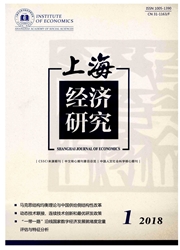

 中文摘要:
中文摘要:
该文将碳生产率作为一种新的比较优势决定因素,将其纳入出口商品质量影响因素的分析框架。研究发现,在控制了其他影响因素和内生性后,中国制造业碳生产率变动对出口质量具有显著且稳定的正向影响;分组估计结果显示,碳生产率变动对不同制造行业出口商品质量的影响存在差异。具体来说,对于低技术行业、轻型制造业和同质性行业来说,碳生产率提高显著促进了出口商品质量的提升;而对中高等技术行业、重型制造业和异质性行业碳生产率变动对出口商品质量的影响不显著。从控制变量的影响来看,物质资本强度对出口质量的影响呈较明显的“倒U”型变动趋势,且这种趋势在中高等技术行业、重型制造业和异质性行业中更为明显。人力资本对出口质量的影响呈较明显的“U”型变动趋势,且该趋势在中高等技术行业和同质性行业中更为明显。研发强度对出口质量的影响也呈较明显的“U”型变动趋势,且该趋势在轻型制造业和同质性制造业中更为明显。从整体上来看,企业规模越大、外资参与度越高、贸易依存度越高越不利于低技术行业、轻型制造业和同质性行业出口质量的提升。
 英文摘要:
英文摘要:
This paper takes carbon productivity as a new comparative advantage determinant and incorporates it into the analytical framework of export quality changes. The finding shows that, after controlling other factors and considering endogeneity, China's manufacturing industry "s carbon productivity has significant and stable positive effect on export goods quality; estimation results by groups show that there exist differences in the effect of carbon productivity change on export quality of different manufacturing sectors. In particular, for the low-tech industries, light manufacturing industries and homogeneous industries, increasing carbon productivity can improve significantly export quality, while there appears little effect in the medium and high-tech industries, heavy manufacturing industries and heterogeneity industries. As to controlling variables, the impact of physical capital intensity exhibits obvious "inverted U" shape, and this trend appears much more obvious in high-tech industries, heavy manufacturing industries and heterogeneous industries. The impact of human capital on the export quality exhibits more pronounced "U-shape" trend, and the trend in high-tech industries and homogeneous industries. The impact of R~D intensity on export quality also shows pronounced "U-shape" trend, and the trend becomes more apparent in light manufacturing industries and homogeneous industries. On the whole, the larger size of firms, the higher degree of FDI participation and the higher degree of dependence on trade are not conducive to enhancing export goods quality in the low-tech industries, light manufacturing industries and homogeneous industries. Based on the research findings, the corresponding policy recommendations are put forward.
 同期刊论文项目
同期刊论文项目
 同项目期刊论文
同项目期刊论文
 期刊信息
期刊信息
